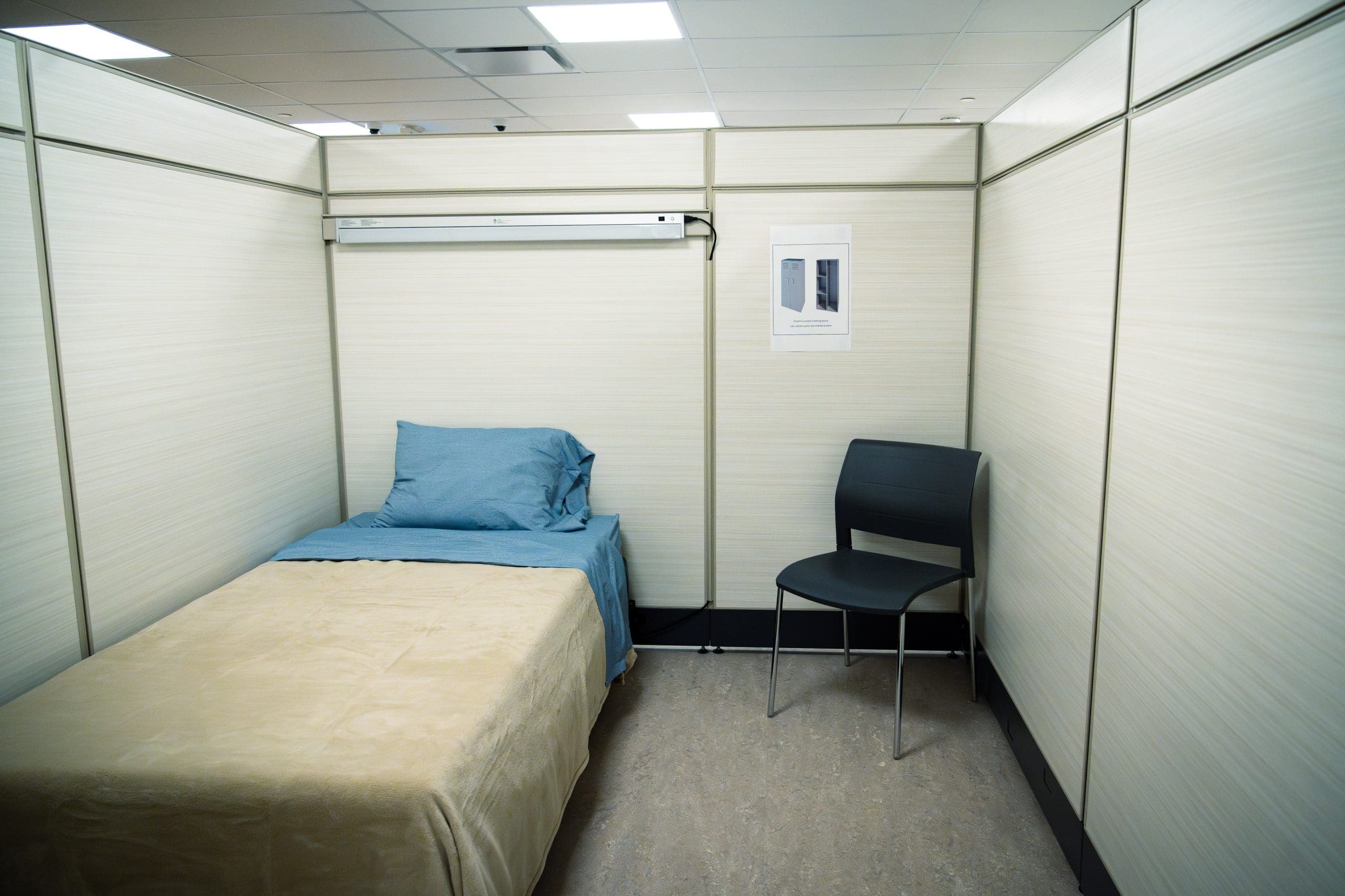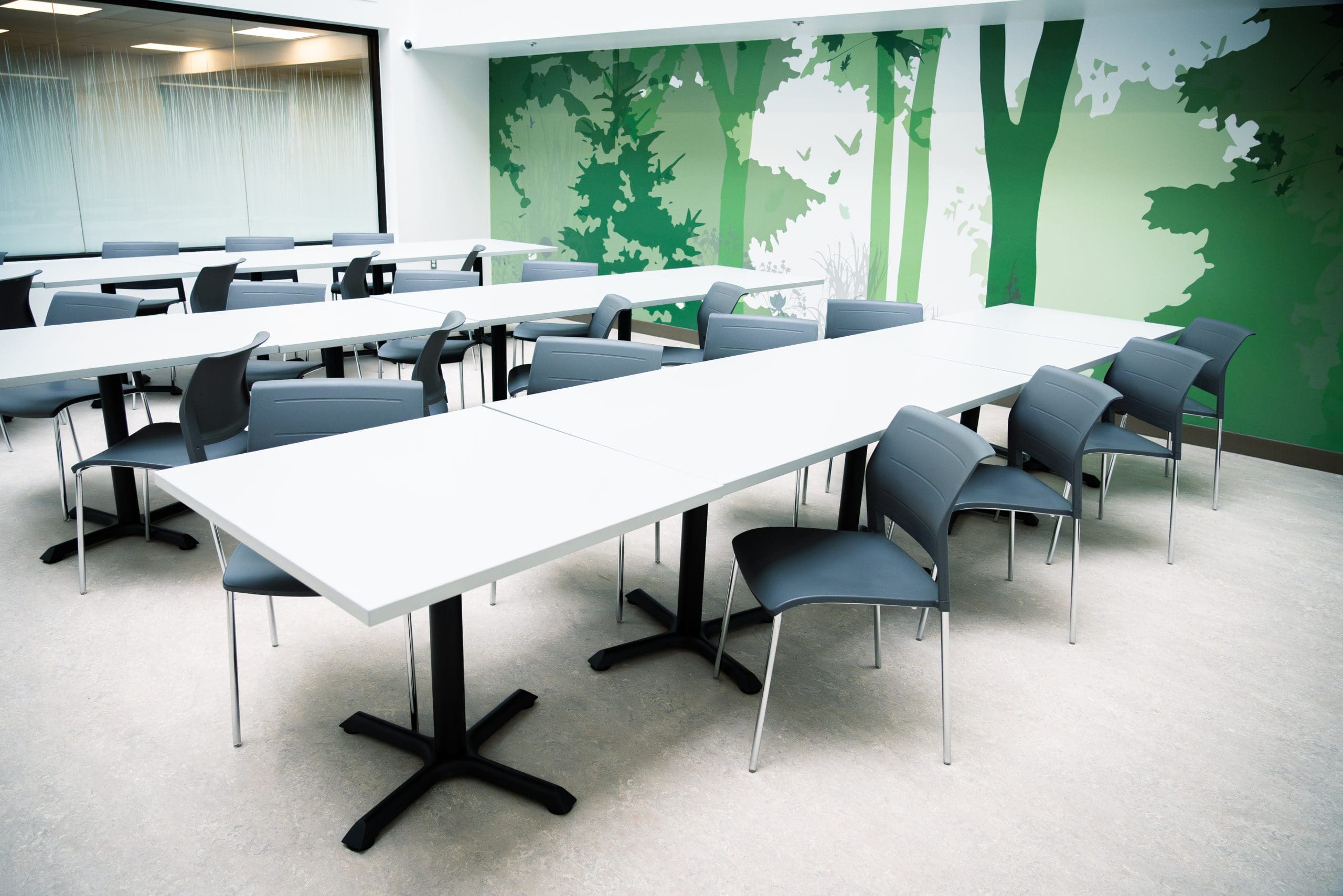In one of the latest steps to address ongoing homelessness in the nation’s capital, the City of Ottawa has converted a vacant office building into a new transitional housing facility that will provide temporary housing for up to 140 people. However, while experts say the facility is necessary, it isn’t likely to start a new trend in Ottawa.
The city has leased the building at 230 Queen St. for a 10-year term to establish a transitional housing facility that will provide “temporary” accommodation for people experiencing homelessness and connect them with employment and housing resources.
“This is technically considered a shelter. It’s not permanent housing, so it sits within the shelter system,” said Kale Brown, director of housing with the city. “The way our system works in terms of who ends up going to this building is you’re assessed by your needs and then we determine a placement, working with our various shelter partners.”
The Queen Street facility will focus on newcomers to Canada but can serve anyone who meets the criteria, Brown said, and will offer supportive temporary accommodations, the building includes kitchens, dining areas, washrooms, showers, laundry facilities, lounge areas, and dedicated rooms for meetings and workshops.

“It’s much more like permanent housing… You have an occupancy agreement where you’re there and you’re expected to be contributing towards your stay,” said Brown. “Again, this is for people who are actively, independently looking for their housing and just need a temporary place to reside.”
People well-suited to the transitional facility will require less support with addressing chronic, complex and mental health conditions or substance use. There will also be approximately 35 staff members and security, with staff on-site at all times. The facility will be managed and staffed by Catholic Centre for Immigrants (CCI) Ottawa, a local social services organization.
Clients will also have access to settlement and employment support, housing search case management, short-term mental health crisis workers, and weekly life skills workshops.

This is the second transitional housing facility for single adults in Ottawa — the other, St-Joseph Transitional Housing Program in the east end, exclusively serves newcomers seeking asylum in Canada who are experiencing homelessness.
While emergency shelters like the Ottawa Mission and Shepherds of Good Hope aim to shelter people for only 30 days, they can stay in transitional housing for up to a year until they “get on their feet”, said Brown.
There is an occupancy agreement and a “contribution fee” that clients pay in order to access the facility, because transitional housing facilities “must have a source of income,” said Brown.
The conversion project is the first of its kind in Ottawa, one that many community organizations and advocates have been working towards as the downtown core grapples with still-vacant buildings and a lack of affordable or transitional housing.
Office-to-housing conversions have largely been the talk of the town since the pandemic emptied the downtown streets and offices, but Brown said the Queen Street facility is a “unicorn” that will be difficult to reproduce.
“One of the reasons that we have pods instead of actual rooms is because once you put floors to ceiling, walls, around something, it triggers a whole set of additional Building Code things you need to do…” he continued. “So I think there’s a lot of excitement around office-to-housing conversion, but there are a lot of challenges when you’re doing really full conversion to actual residential where someone would have a lease.”
Ottawa Compass has previously spoken with JBPA Developments Inc., an Ottawa-based developer that has been working on several projects converting vacant office buildings into market housing.
While conversion to housing may seem like a no-brainer, Kevin Morris, chief financial officer at JBPA said not every building is suitable for conversion.
Factors like layout, floor plans and the surrounding infrastructure and community all weigh in, and in some cases, it can be “easier” to just start from scratch.
“I think it’s a really promising model, and there’s a lot of interest around this, but we want folks to understand this was kind of a unicorn site in terms of having the right systems, HVAC, that kind of thing, to be able to do it,” Brown explained. “Not all office buildings are this easy to convert to some type of housing.”
Kaite Burkholder Harris is the executive director at the Alliance to End Homelessness Ottawa, member-based organization representing 75 agencies in Ottawa, including CCI and providing a “backbone” and “coordinated effort” to ending homelessness.
“We’re really trying to make navigating the system a better experience for the person who’s homeless or in a housing crisis,” she told Ottawa Compass. “And increasingly, we’re trying to really drive and focus on prevention and diversion to reduce the flow into shelter and into the shelter system.”
While she said the conversion of vacant buildings into transitional housing is an “awesome idea”, she echoed Brown’s concerns that it can be a very difficult process.
“Office conversions seem like a really good idea, and then when you dig into it, oftentimes, they just won’t work,” said Burkholder Harris. “And so I think it’s telling that this isn’t actually permanent housing, but that they converted it into transitional housing and a bit of a different model, because that’s what was actually doable with the building.”
In the broader conversation of ending homelessness, she said facilities like shelters and Queen Street are vital when addressing the crisis, but she points to countries like Finland where homelessness has been “functionally ended” by focusing on supportive but permanent housing.
“The next step in our community, and more broadly in the city, is certainly looking towards how we move more and more of our shelter system towards a permanent model, knowing that that is the best model,” she explained. “We’re always going to need emergency shelter to some degree, but how do we both reduce the number of shelter beds that we need in this city, increase our permanent housing, and then look at actually changing the design of shelter?”
She said research has shown that permanent housing — where people can access support but live without a time limit on their stay — is most productive in reducing homelessness by using the “housing first” approach.
“Ultimately, it would be fantastic if we’re able to make that transitional model where you can access those very specific, necessary supports at a shelter level, but it’s a more dignified context where you have a lock and key,” she continued. “So that you get that level of expertise and support to be able to move to permanent housing as quickly as possible.”
The Queen Street facility is substantially complete and is now awaiting “soft items” like dishes and linens, he said, and the City is hoping that people will move in by the end of the summer.

